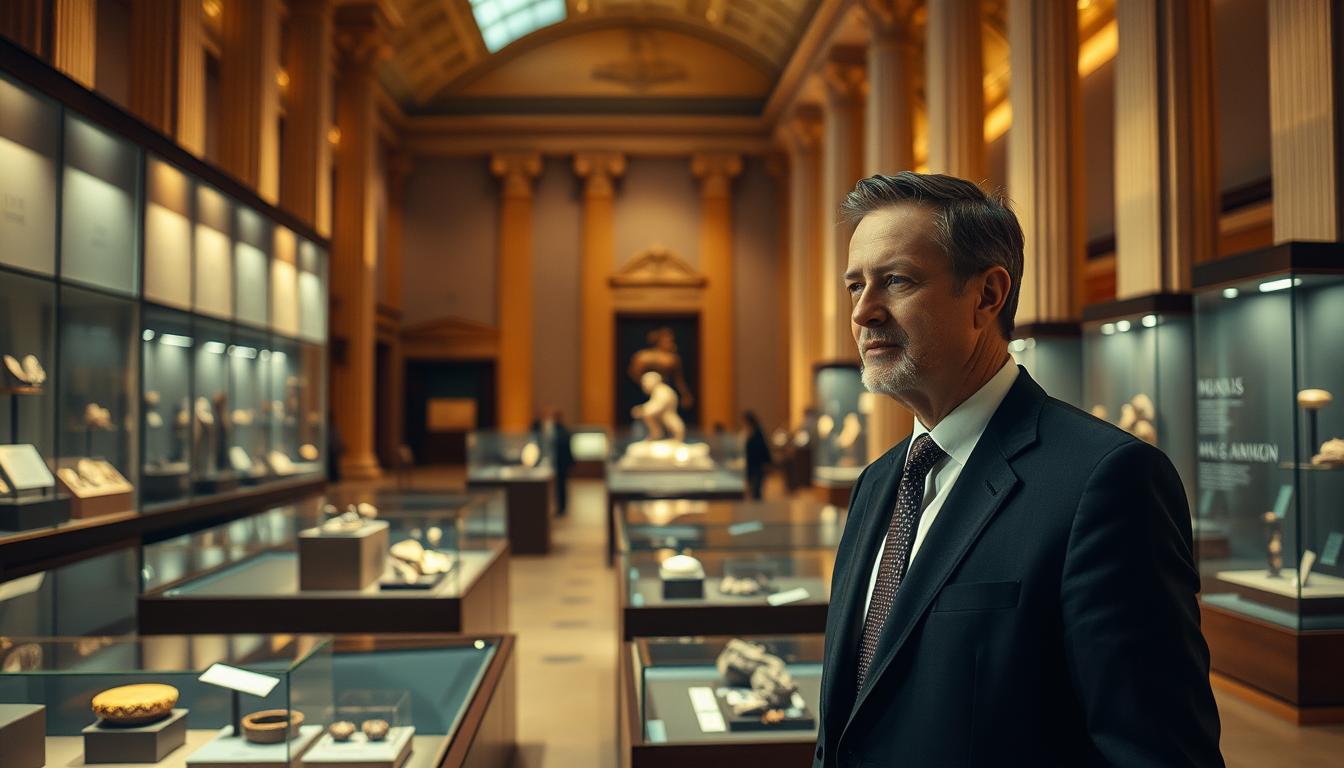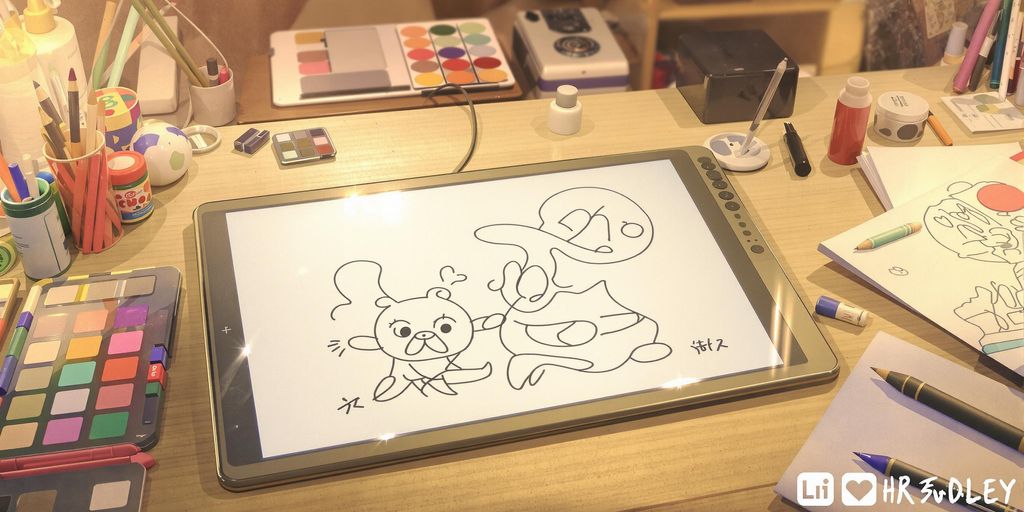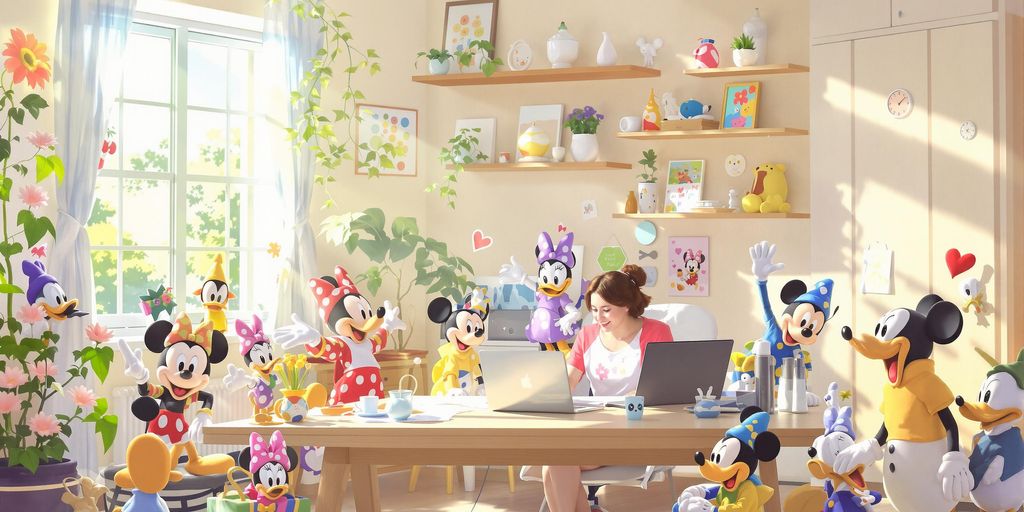What if the most sought-after skill for museum curators in 2025 isn’t art history expertise or archival knowledge? The cultural sector’s rapid evolution demands professionals who blend tradition with innovation—and your ability to adapt could determine your success in this competitive job market.
With institutions prioritizing digital engagement and community-driven storytelling, today’s curators shape how society interacts with art and history. Salaries reflect this growing responsibility, with median earnings reaching $52,120 in 2022—a figure expected to rise as museums expand their roles as cultural hubs.
You’ll need more than a polished resume to stand out. Modern curators juggle exhibition design, fundraising, and audience analytics while maintaining scholarly rigor. Platforms like automated resume builders help streamline applications, letting you focus on showcasing specialized skills in emerging areas like virtual curation or cross-cultural collaboration.
Key Takeaways
- Curator roles now require balancing traditional expertise with digital innovation and community outreach
- Geographic opportunities vary widely, with urban centers and niche institutions offering distinct career paths
- Specializations in areas like natural history or digital collections can increase hiring potential
- Technology integration has become critical for exhibition design and audience engagement strategies
- Networking through professional associations remains vital for accessing unadvertised positions
Understanding the Museum Curator Role and Career Landscape
https://www.youtube.com/watch?v=oTa3XVN-t2Y&pp=ygUZI2FudXJhZGhhZ295YWxhcmNoYWVvbG9neQ%3D%3D
Curators serve as cultural architects, balancing scholarly research with public storytelling. Their work extends beyond galleries—you’ll manage budgets, collaborate with conservators, and interpret artifacts for diverse audiences. Modern institutions demand expertise in both physical collections and digital outreach strategies.
Job Responsibilities Overview
Your core tasks involve designing exhibitions that connect artworks to contemporary themes. This requires selecting pieces, arranging displays, and crafting narratives through wall texts or audio guides. Administrative duties like securing loans and negotiating shipping contracts prove equally critical to success.
Public engagement now includes virtual tours and social media content creation. You’ll adapt research findings into accessible formats, from children’s workshops to academic symposiums. Budget management skills transfer well from fields like education, particularly when handling exhibition financing.
Educational Requirements and Industry Trends
A master’s degree in art history or museum studies remains standard, though natural history roles often require doctorates. Specialized courses in collection databases or 3D modeling boost competitiveness. Emerging trends prioritize interdisciplinary collaboration—expect to work with tech teams on augmented reality installations.
Institutions increasingly value fundraising experience and community partnership development. Stay updated through organizations like the American Alliance of Museums, which offers resources on ethical acquisition practices and digital preservation techniques.
How to Land a Museum Curator Job in 2025
Breaking into the curatorial field requires strategic planning and proactive relationship-building. Start by treating your job search like an archival project—systematic, detail-oriented, and focused on patterns.

Researching Job Opportunities in the Competitive Job Market
Create a spreadsheet tracking openings at museums, galleries, and historic sites. Bookmark the American Alliance of Museums career center and set alerts for terms like “assistant curator” or “collections specialist”. Small institutions often post roles locally, while larger organizations list positions on platforms like LinkedIn and Artsy.
Prioritize institutions aligning with your expertise. For example, botanical gardens seek curators with biology backgrounds, while contemporary art spaces value digital curation skills. Review event coordinator resume examples to understand how adjacent roles translate skills to cultural work.
Networking and Industry Connections
Join the Association of Art Museum Curators to access members-only events and mentorship programs. Attend at least two conferences annually—these often host speed networking sessions with hiring managers. One recent AAMC attendee landed interviews at three major museums after participating in their portfolio review.
Conduct informational interviews with professionals at target institutions. Ask specific questions like, “What emerging skills are shaping curator roles at your museum?” Follow up by sharing relevant articles or exhibition ideas to demonstrate initiative.
Crafting an Outstanding Resume and Portfolio
Your application materials act as the first exhibition of your curatorial vision. Institutions seek candidates who present credentials with the precision of artifact documentation and the creativity of gallery design. RoboApply’s AI tools transform scattered experiences into cohesive narratives that resonate with hiring committees.
Highlighting Museum Studies and Relevant Experience
Lead with your academic foundation. List your bachelor’s degree in art history or related fields first, followed by specialized master’s programs in museum studies. Include coursework like “Collections Management” or “Digital Curation” to show alignment with modern museum practices. Detail internships using action verbs: “Catalogued 150+ artifacts” or “Co-developed interactive visitor guides.”
Utilizing RoboApply's AI Resume and Cover Letter Builder
Automate formatting without sacrificing personality. RoboApply’s builder structures your museum work into ATS-friendly sections while preserving unique achievements. For example, it converts “Managed loan agreements” into “Orchestrated international artwork loans (12 pieces, $250K value).” Pair this with tailored cover letters that reference specific institutions’ missions—crucial for roles at community-focused museums.
Optimizing for ATS with RoboApply's Grammar Checker
Beat automated screenings by mirroring job descriptions’ language. If a posting emphasizes “grant writing,” ensure your resume includes phrases like “Secured $40K in preservation grants.” RoboApply’s checker flags passive voice and suggests industry-specific terminology from real curator CVs. Complement this with a portfolio showcasing 3-5 high-impact projects, like digital exhibitions or published research.
Balance traditional credentials with technical flair. Mention database systems you’ve mastered or collaborative tools used during volunteer coordination roles. This dual focus demonstrates readiness for today’s hybrid curatorial environments.
Developing Key Skills and Gaining Experience
Building expertise requires combining academic rigor with real-world practice. Start by targeting roles that offer direct exposure to collection management and exhibition workflows. These opportunities sharpen both technical abilities and critical thinking.

Internships and Volunteering
Apply for positions in curatorial offices or education departments at mid-sized institutions. You’ll handle tasks like condition reporting artifacts or developing visitor surveys. One recent graduate secured 3 job offers after cataloging 200+ objects during a summer internship.
Volunteer roles at local historical societies build transferable skills. Assist with archival digitization projects or public program coordination. These experiences demonstrate commitment while expanding professional networks.
Advanced Education Pathways
Pursue graduate museum studies programs with accreditation from the American Alliance of Museums. Look for courses covering digital preservation and ethical acquisition practices. Many degrees now integrate VR exhibition design labs into their curriculum.
Complement your master’s degree with certifications in niche areas like textile conservation or indigenous heritage management. Platforms like AI resume builders help translate academic achievements into compelling career narratives.
Key strategies include:
- Completing 150+ internship hours before graduation
- Taking grant writing workshops through professional associations
- Presenting research at regional conferences
Leveraging RoboApply Tools for Career Success
Modern cultural institutions demand candidates who pair curatorial expertise with smart workflow management. RoboApply’s suite of career tools helps you meet this challenge while maintaining focus on your professional growth.
Auto-apply Chrome Extension and Job Tracker Features
RoboApply’s Auto-apply Chrome Extension handles repetitive applications across 15+ platforms. You’ll maintain momentum in competitive markets while preserving energy for portfolio refinement. The Job Tracker organizes opportunities by deadline and institution type—crucial when balancing applications at museums, galleries, and academic collections.
Outreach CRM and Interview Coach for Preparation
Build lasting connections through the Outreach CRM. Categorize contacts by event type or institution, then schedule follow-ups during key hiring cycles. When interviews arrive, the AI Interview Coach analyzes your responses to questions like “How would you reinterpret classical works for digital audiences?”—preparing you for real-world curator dialogues.
These tools create synergy between application volume and quality. As one user noted: “I landed 3 interviews in 6 weeks while finalizing my thesis on Renaissance artifacts.” The platform’s efficiency lets you prioritize professional development activities that showcase specialized knowledge.
Key benefits include:
- Automated status updates for 50+ applications
- Customizable CRM tags for donor relations and peer networking
- Performance analytics identifying strengths in interview simulations
Ace Your Interview: Preparation and Best Practices
Interview success hinges on strategic alignment between your expertise and institutional priorities. Focus on articulating how your curatorial philosophy addresses current challenges in cultural preservation and audience engagement.
Formulating Strong Responses and Storytelling
Structure answers using the STAR method—describe a Situation, Task, Action, and Result. For example: “When our collection database crashed (Situation), I coordinated digitization efforts (Task) by training volunteers in metadata standards (Action), recovering 95% of records within two weeks (Result).”
Align responses with the museum’s mission by referencing their recent exhibitions or educational programs. Practice explaining complex art historical concepts in simple terms—a skill critical for public-facing roles.
Demonstrating Industry Knowledge and Passion
Discuss emerging trends like 3D artifact scanning or community co-curation projects. Reference specific works from the institution’s collections to show thorough preparation. For digital-focused roles, highlight experience with virtual exhibition platforms.
Use resources like the curatorial interview strategies guide to refine your approach. Pair technical expertise with stories about inspiring visitor interactions—key for roles requiring public speaking.
Balance confidence with curiosity. Ask thoughtful questions about their acquisition priorities or plans for expanding resume-building techniques into staff development programs. This demonstrates both expertise and growth mindset.
FAQ
What degree do I need to become a museum curator?
Most institutions require a bachelor’s degree in museum studies, art history, or a related field. Competitive roles often demand a master’s degree. Specialized courses in collection management or conservation strengthen your candidacy.
How can I stand out in the museum job market?
Build hands-on experience through internships at organizations like the Smithsonian or local galleries. Use tools like RoboApply’s AI Resume Builder to highlight research projects, exhibitions, and preservation tasks. Networking via industry events also boosts visibility.
What skills do hiring managers prioritize for curator roles?
Expertise in cataloging collections, designing educational programs, and interpreting historical content is critical. Technical skills like digital archiving and familiarity with platforms like PastPerfect are valued. Soft skills like storytelling for public engagement matter too.
How do I prepare for curator interviews?
Study the institution’s mission and current exhibitions. Use RoboApply’s Interview Coach to practice discussing past projects, such as restoring artifacts or organizing events. Demonstrate your understanding of ethical practices in handling sensitive materials.
Can volunteering replace formal education for museum work?
While unpaid roles at museums provide practical knowledge, they rarely substitute for a degree. Combine both: volunteer at institutions like MoMA or natural history museums while pursuing accredited programs to meet credential requirements.
How does RoboApply help with job applications?
Its Auto-apply Chrome Extension scans platforms like AAM’s job board for openings. The ATS Optimizer ensures keywords like “collections management” or “curatorial research” align with job descriptions. Track progress using the Job Tracker dashboard.
What trends are shaping curator roles in 2025?
Demand for digital curation (virtual exhibits, 3D modeling) and DEI initiatives is rising. Institutions like the Getty prioritize candidates who blend traditional practices with tech-driven solutions. Stay updated through workshops or platforms like Coursera.


















